- More Than Just Clothes: How Television Fashion Defines Characters and Shapes Our Culture
- The Silent Storyteller: How On-Screen Style Builds Character
- A Mirror to Society: Costume Design as Cultural Documentation
- From Screen to Street: The Influence of Television Fashion on Trends
- The Creative Process Behind the Wardrobe
- Technology and Innovation in On-Screen Style
- Cultural Impact and Global Influence
- The Psychology of Television Fashion
- The Economic Impact of Television Fashion
- Future Trends in Television Fashion
- Conclusion: The Lasting Legacy of Television Fashion
- About IGREEN TEX
- IGREEN TEX VIETNAM CO LTD
More Than Just Clothes: How Television Fashion Defines Characters and Shapes Our Culture
We often remember our favorite television shows for their compelling plots or memorable characters. We recall witty dialogue and dramatic turning points. But another powerful element is always at play, quietly shaping our experience: the style. From the sharp suits of Madison Avenue to the eclectic outfits of a New York writer, television fashion is more than just costume. It is a silent narrator. It is a visual language that communicates identity, aspiration, and the unspoken truths of a story. This sartorial world is rich with meaning.
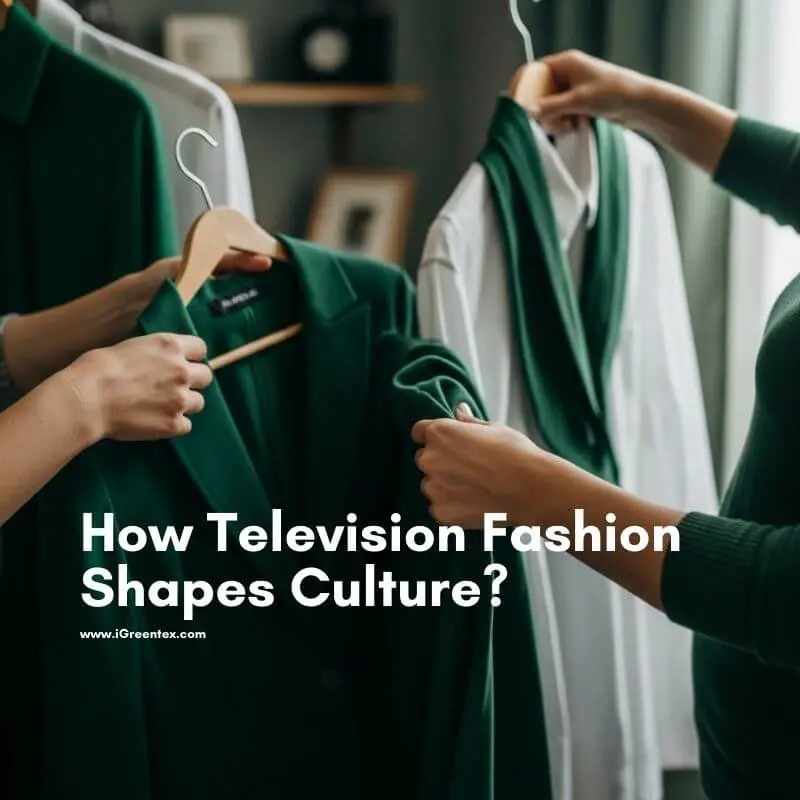
Many viewers admire the outfits they see on screen. They may even feel inspired to adopt a character’s style. Yet, they often do so without recognizing the deeper purpose behind each sartorial choice. The wardrobe on a show is a crucial storytelling tool. It builds worlds, develops characters, and reflects distinct cultural moments. Just as manufacturers carefully select fabric types for different garments, costume designers make deliberate choices. Every piece of clothing that appears on screen serves a narrative purpose.
This exploration will decode the hidden language of on-screen style. We will examine how this visual medium not only mirrors our society but also actively shapes it. By understanding these connections, you will gain a new perspective. You will see how television fashion truly transcends mere aesthetics. It is a complex and influential art form. The impact of great television fashion is undeniable.
See more: Choosing Sustainable Fabrics for Apparel Brands
See more: Business Case for Sustainable Fashion Manufacturing
See more: Water Conservation Techniques in Textile Industry Vietnam
See more: Marketing Sustainable Fashion to Conscious Consumers
See more: Challenges in Implementing Ethical Apparel Production
See more: 4 Steps Sustainable Supply Chain for Global Streetwear Brand
The Silent Storyteller: How On-Screen Style Builds Character
Before a character ever speaks a line, their clothing has already started telling their story. Costume designers are masters of visual storytelling. They use color, silhouette, and texture to communicate personality, status, and an internal journey. This fundamental aspect of television fashion creates an immediate and often subconscious understanding of a character. It provides a shortcut to their soul.
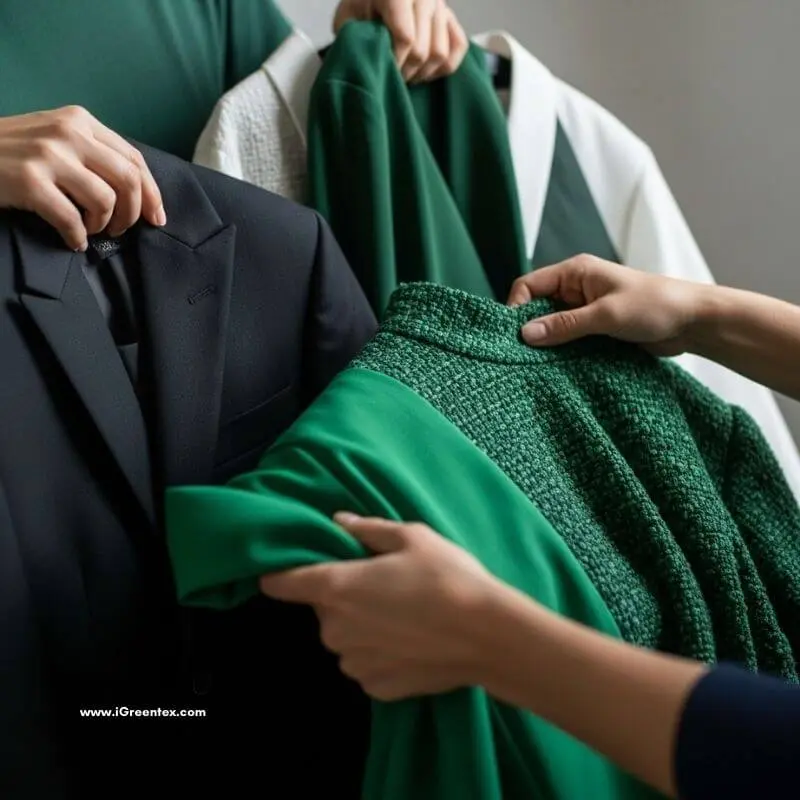
Consider the iconic power suits in the series Suits. The sharp tailoring, expensive fabrics, and flawless fit instantly communicate power and ambition. Harvey Specter’s wardrobe establishes his status as a top-tier lawyer long before his actions do. This demonstrates how on-screen style functions as a character-building tool. It powerfully reinforces the show’s narrative themes of success and control.
Color psychology plays a massive role in this visual storytelling. In Breaking Bad, Walter White’s wardrobe gradually shifts from mundane beiges to darker, menacing shades. This visual transformation mirrors his moral decay. It is a strategic use of color in television fashion. The evolving color palette shows, rather than tells, the audience about his character arc. It is a subtle yet powerful cue.
The evolution of a character’s style throughout a series serves as a potent narrative device. Peggy Olson in Mad Menbegins her journey in ill-fitting, conservative outfits. These reflect her initial status and naivety. As she gains confidence and power in the advertising world, her style becomes more sophisticated and bold. Her wardrobe creates a visual timeline of her professional and personal growth. This is a masterful use of television fashion.
Understanding these design principles is similar to how clothing manufacturers approach garment development. Every detail serves a specific purpose. Costume designers apply similar strategic thinking. They create meaningful visual narratives that resonate with audiences. Their work is a key part of the creative process. This aspect of television fashion is truly an art.
A Mirror to Society: Costume Design as Cultural Documentation
Beyond individual characters, the clothes on screen serve as a powerful reflection of specific eras. The outfits capture the mood, trends, and social values of particular periods. Television fashion acts as a living time capsule. It preserves a snapshot of cultural history for future generations. It is a form of visual documentation.
The vibrant styles of Sex and the City perfectly captured the optimistic spirit of late 1990s New York. Carrie Bradshaw’s wardrobe reflected a new era of female independence and sartorial expression. The show’s impact was immense. It cemented the idea that on-screen style could rival runway influence. This series redefined the power of television fashion.
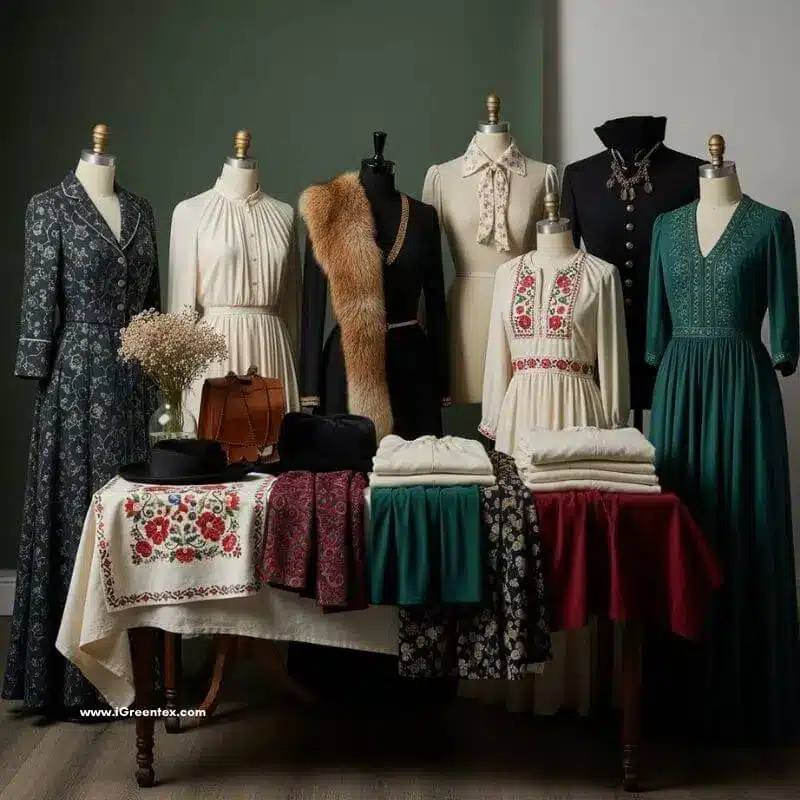
The sophisticated clothing in The Crown recreates historical outfits with great accuracy. It also reflects the rigid formality of the British monarchy. The wardrobe in this series speaks to a world of duty and carefully managed public image. It provides history lessons through textiles and silhouettes. This is a very academic side of television fashion.
Even fictional worlds use on-screen style to build believable societies. The distinct styles of different houses in Game of Thrones establish regional identities and cultural values. Rich Lannister fabrics suggest wealth. Practical Stark furs indicate northern resilience. This world-building through costume design creates immersive viewing experiences. It’s a key function of good television fashion.
Modern production teams often work with specialized manufacturers to create authentic period pieces. This ensures historical accuracy in on-screen representation. This attention to detail enhances the credibility of the storytelling. The quality of television fashion relies on this.
From Screen to Street: The Influence of Television Fashion on Trends
Perhaps the most visible impact of on-screen style appears in our everyday wardrobes. Popular shows have the power to launch major fashion trends overnight. An iconic moment can create sudden demand for specific clothing items. This demonstrates the commercial influence of television fashion.
The “Rachel” haircut from Friends exemplifies this phenomenon. But the show’s impact on 1990s style was comprehensive. Rachel Green’s simple yet chic outfits defined casual fashion for a decade. From denim overalls to slip dresses, her wardrobe was highly influential. The show made certain styles accessible and desirable to millions. This is a prime example of influential television fashion.
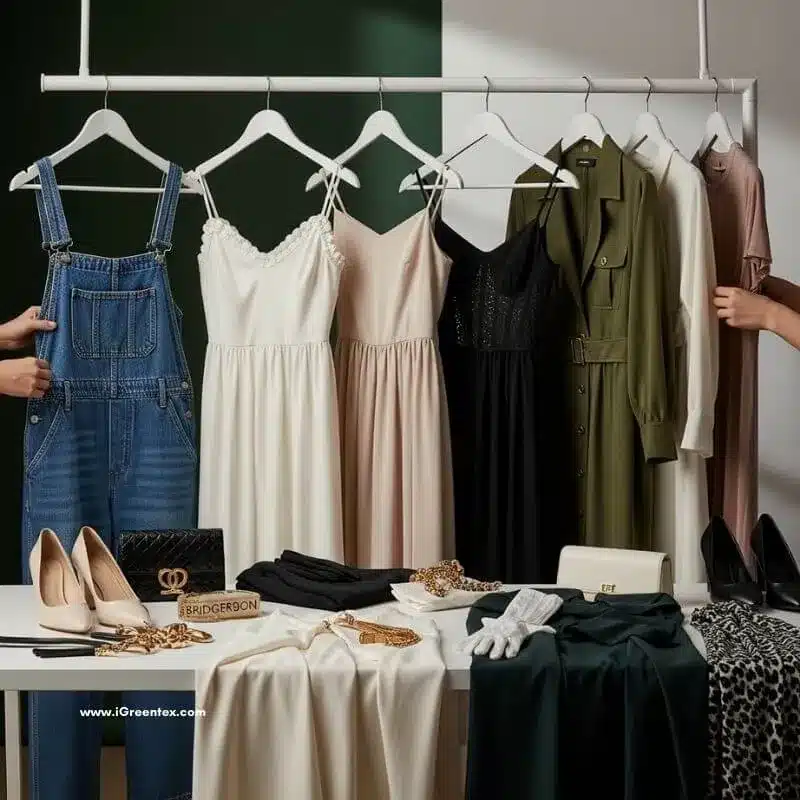
More recently, the “quiet luxury” trend was amplified by Succession. The Roy family’s understated, logo-free wardrobe became a major talking point. The show’s costume design perfectly captured ultra-wealthy aesthetics. It heavily influenced high-end fashion directions. This modern example shows how on-screen looks shape designer collections. This particular wave of television fashion was very impactful.
Bridgerton sparked renewed interest in “Regencycore” fashion elements. Empire-waist dresses, corsets, and delicate gloves found their way into modern wardrobes. The show’s romantic aesthetic proved that historical costumes can inspire contemporary trends. It highlights the surprising power of television fashion. The influence of television fashion is cyclical and varied.
The global reach of these trends creates opportunities for manufacturers worldwide. They can capitalize on these on-screen influences. This applies from high-end boutiques to mass-market retailers. The cycle of television fashion drives commerce.
The Creative Process Behind the Wardrobe
The incredible impact of television fashion results from the hard work of costume designers and their teams. These professionals function as historians, sociologists, and character analysts. They conduct extensive research. They ensure accuracy or create believable aesthetics for fictional worlds. Their work is incredibly detailed.
Creating the wardrobe for a series involves many steps. This includes mood boards, design sketches, and numerous fittings. Sourcing the right materials is also crucial. A detailed process of fabric checking is often required to ensure textiles look and behave correctly on camera under harsh lighting. Costume designers collaborate closely with directors, production designers, and actors. This ensures clothing aligns with the overall vision. This collaborative approach makes television fashion effective.
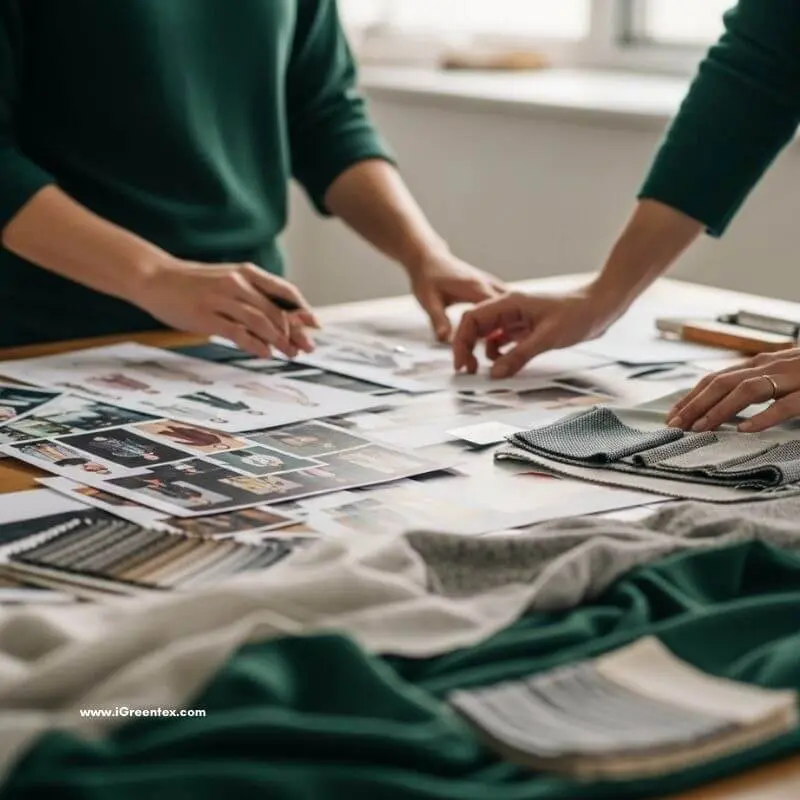
Their work involves thousands of decisions. They think about character representation through clothing. What does a character wear when feeling vulnerable? How does their style change after major life events? Each choice serves the story deliberately and meaningfully. This is the art of television fashion.
Professional costume departments often collaborate with garment manufacturers to bring their visions to life. This requires expertise in both creative design and practical production. The partnership between designers and manufacturing specialists ensures high-quality results for television fashion.
The attention to detail in costume design extends beyond main characters. It includes background actors and extras. Every person visible on screen contributes to the overall aesthetic. This comprehensive approach creates immersive viewing experiences. It is a key part of successful television fashion.
Technology and Innovation in On-Screen Style
Modern costume design benefits from technological advances. These are seen in fabric development and manufacturing techniques. Designers now have access to innovative materials. These enhance both durability and visual appeal. These advances allow for more creative solutions in television fashion.
Digital design tools help costume designers visualize and modify concepts before production begins. Virtual fitting processes can reduce time and costs. They ensure proper fit and appearance. Technology streamlines the creation process significantly. The world of television fashion is always evolving.
High-definition and 4K television formats require even greater attention to detail. Every fabric texture, seam, and accessory appears more prominently on modern screens. This technological evolution pushes on-screen style standards higher than ever before. It raises the bar for television fashion.
Sustainable practices increasingly influence production choices. Eco-friendly fabrics and ethical manufacturing processes become more important. This is due to growing environmental awareness. Costume departments now consider environmental impact alongside creative objectives. This brings a new dimension to television fashion.
Cultural Impact and Global Influence
On-screen style extends its influence across cultural boundaries. This is thanks to global distribution of popular shows. Streaming platforms allow trends to spread rapidly across different countries and cultures. This international reach amplifies the impact of television fashion exponentially. It is a truly global phenomenon.
Regional preferences and cultural sensitivities influence how trends translate across different markets. Local adaptations of international shows often modify clothing choices to suit cultural norms. This localization process demonstrates the flexibility of on-screen style as a communication tool. The adaptability of television fashion is one of its strengths.

Social media platforms amplify this influence through fan discussions, outfit breakdowns, and style recreations. Instagram and TikTok users share inspiration from their favorite shows. This extends the reach of television fashion beyond traditional viewing audiences. This digital amplification makes on-screen style more influential than ever.
The global nature of these trends creates opportunities for international manufacturers. They can participate in this lucrative market. They connect creative vision with practical production capabilities. The ecosystem around television fashion is vast.
The Psychology of Television Fashion
Viewers form emotional connections with characters partly through their clothing choices. Familiar styles create comfort and relatability. Aspirational outfits can inspire personal style evolution. This psychological impact influences both individual identity and collective fashion consciousness. Television fashion shapes how we see ourselves.
On-screen style affects viewer perception of professional dress codes and social expectations. Shows set in workplace environments communicate unspoken rules about appropriate attire. This educational aspect of television fashion helps viewers navigate real-world social situations. It can be a subtle guide.
The aspirational quality of on-screen looks encourages viewers to experiment with their personal style. Seeing characters successfully navigate social situations while wearing specific outfits provides confidence to try similar approaches. Television fashion serves as a safe way to explore identity through clothing. It offers a form of escapism and inspiration.
Color associations developed through what we see on TV can influence real-world purchasing decisions. Characters associated with specific colors or styles create positive or negative associations in viewers’ minds. This psychological programming through television fashion can affect long-term consumer behavior.
The Economic Impact of Television Fashion
The industry around on-screen style generates significant economic activity. This is through costume production, retail partnerships, and licensing agreements. Popular shows can create entire product lines based on character wardrobes. This commercialization of television fashion represents a major revenue stream for entertainment companies.
Retail partnerships allow viewers to purchase clothing directly inspired by their favorite shows. Fast fashion retailers quickly produce affordable versions of popular on-screen looks. This democratization of on-screen style makes trends accessible to broader audiences. It is a key part of the television fashion economy.
Tourism industries can also benefit. This is through location-based shopping experiences. Fans visit filming locations partly to shop for clothing similar to what characters wore. This “fashion tourism” creates additional economic opportunities for local businesses. The economic reach of television fashion is surprisingly wide.
The employment impact of this industry extends from costume designers to seamstresses, fabric suppliers, and retail workers. This ecosystem supports numerous careers. It contributes to local economies where productions take place. The world of television fashion is a significant employer.
Future Trends in Television Fashion
Virtual and augmented reality technologies will likely transform how on-screen style is designed and experienced. Interactive viewing experiences may allow audiences to explore character wardrobes in new ways. These innovations will expand the possibilities for viewer engagement with television fashion. The future of television fashion is interactive.
Personalization technologies might enable customized viewing experiences based on viewer preferences. Streaming platforms could highlight clothing choices most relevant to an individual’s tastes. This targeted approach would make the content more personally meaningful. It is a new direction for television fashion.
Sustainable practices will continue to influence production decisions. Eco-friendly materials and ethical manufacturing processes will become standard requirements. The industry will lead by example in responsible production practices. This will bring a new layer of meaning to television fashion.
Cross-platform storytelling will integrate on-screen looks across multiple media formats. Characters might maintain consistent style elements across television, film, and digital content. This continuity will strengthen television fashion as a narrative tool.
Conclusion: The Lasting Legacy of Television Fashion
Television fashion represents far more than superficial styling choices in entertainment content. It functions as a sophisticated communication system. It builds characters, reflects cultural values, and influences real-world behavior. The impact of this medium extends from individual psychology to global economics. It is a powerful cultural force.
Understanding on-screen style as a storytelling tool enriches the viewing experience. It reveals hidden layers of meaning. Every costume choice serves multiple purposes simultaneously. This can be from character development to cultural commentary. This complexity makes television fashion worthy of serious study and appreciation.
The influence of on-screen looks on contemporary culture continues growing. This is through technological advances and global distribution. Social media amplification and international accessibility expand the reach of television fashionbeyond traditional boundaries. This evolution ensures it will remain culturally significant.
The next time you watch your favorite series, pay attention to the clothing choices. Notice how an outfit reinforces personality traits. See how it indicates character growth and reflects the show’s overall themes. This deeper appreciation reveals television fashion as an art form. It shapes both entertainment and society. The legacy of great television fashionlives on. It becomes part of our shared cultural memory, influencing fashion for generations.
About IGREEN TEX
IGREEN TEX is a provider of fashion and textile products, offering a wide range of both domestically and internationally. Our commitment to quality ensures that our products not only meet the highest standards but also promote eco-friendly practices, in Vietnam sportswear manufacturing.
If you want to read more information about canvas bags, and if you want to tote bags at Ho Chi Minh City, you can see it here!!!
To view product information click here
Visit our website to learn more about our products and services: IGREEN TEX
IGREEN TEX VIETNAM CO LTD
Address: No. 6 – 6A, D52 Street, Ward Bay Hien, HCMC
E-mail: info@igreentex.com
WhatsApp/Viber/Zalo: +84 938.045.900